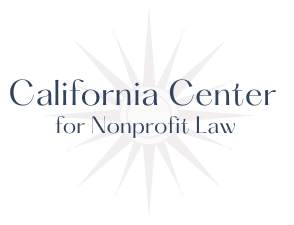
10 Common Risks When Considering the Merger of Two Charities
Whether to cut costs, coordinate efforts, or avoid unnecessary duplication of services, the collaboration or merger of two charities is becoming increasingly utilized today. Nonetheless, even when a merger appears to be the best solution, it is not without risk. Here are ten potential risks that you may encounter when merging two charities.
- Financial Obligations – When one charity merges with another, it necessarily takes on the other charity’s debts, obligations, and other financial responsibilities. Some of those potential liabilities also may be hidden, such as in the case of a future lawsuit stemming from some past action or harm. As a result, total honesty and a full inspection of each charity’s finances are necessary for a more successful and less risky merger.
- Loss of Identity – Each charity likely has forged its own identity in terms of values, workplace culture, and leadership styles. When two charities with two very different identities merge, the newly formed charity must create a new identity, which can lead to a culture clash in terms of the image it wishes to portray to the public and within the workplace. Staff from both charities may mourn the loss of their original charity and the loss of some staff members, as well.
- Redefining Priorities – Closely related to the loss of identities may be the loss of some programs or funding caused in part or in whole by the merger. The new charity may not value or prioritize some of the same programs or functions that one of the old charities valued. This phenomenon can lead to hard feelings among staff members and, again, a sense of loss of shared vision.
- Loss of Support – Some board members or funding sources may oppose the merger for various reasons. A difference in philosophy or direction between some members of the two charities’ boards may lead them to oppose a merger. As a result, some board members whose support was critical to one of the original charities may abandon the new charity. Likewise, a funding source may no longer support the new charity due to the loss of an executive director or other critical staff member or a change in direction of the new charity from the old.
- Workforce Risks – Some staff members may lose funding for their programs, be forced into different roles, or even lose their jobs. Staff may suddenly be subject to new work hours, a new workplace, new benefits programs, and new working conditions they do not like. These changes can lead to increased employee dissatisfaction, decreased employee retention rates, less productivity, and even legal claims against the employer.
- Branding Risks – The loss of familiar branding is a particular problem with one or more long-established and well-recognized charities that suddenly have a new name and logo that no one recognizes. Marketing a new brand and transitioning can be time-consuming, expensive, and difficult. In the meantime, the lack of name and logo recognition can lead to decreased donations, support, and participation by the community. Opposition to the merger also can lead to negative publicityfor the new charity.
- Real Estate Issues – Taking on real estate owned by another charity can be risky, as it can lead to financial responsibility for a building that needs extensive work, land that needs environmental remediation, or other similar issues. In some cases, tax issues also may arise from the transfer of title from one charity to the new charity.
- Contract and Licensing Obligations – The new charity must examine the existing contractual and licensing obligations of the two individual charities to determine whether those agreements bind them or if they must take action to create new contracts and obtain new licenses. While the new charity may be able to assume some contracts and licenses, assumption may not be possible in all cases. Termination of contracts can also lead to financial liability, which may affect the new charity if it assumes each charity’s debts and liabilities.
- Tax Status Risks – A history of non-compliance with IRS rules or maintaining the charity’s tax-exempt status could impact the new charity. For example, compliance issues may exist with past political activity and other rules that could jeopardize a charity’s tax-exempt status.
- Problematic Relationships – One charity may have developed a contentious relationship with a key political figure or an adverse history with a local government agency. These poor relationships can be detrimental to the new charity as it works to advance its mission and goals.
Considering a Merger? Call California Center for Nonprofit Law Today
While mergers and other forms of collaboration can be critical ways for charitable organizations to manage faltering finances, work together toward a common objective, and present a united front on an important social issue, they also can produce legal issues. If you need legal advice or assistance, we are here to help. Contact an experienced nonprofit lawyer today. Call the California Center for Nonprofit Law offices at (949) 892-1221, email us at info@NPOlawyers.com, or contact us online for more information today. We offer a wealth of experience handling the unique legal issues that charitable organizations routinely face.
